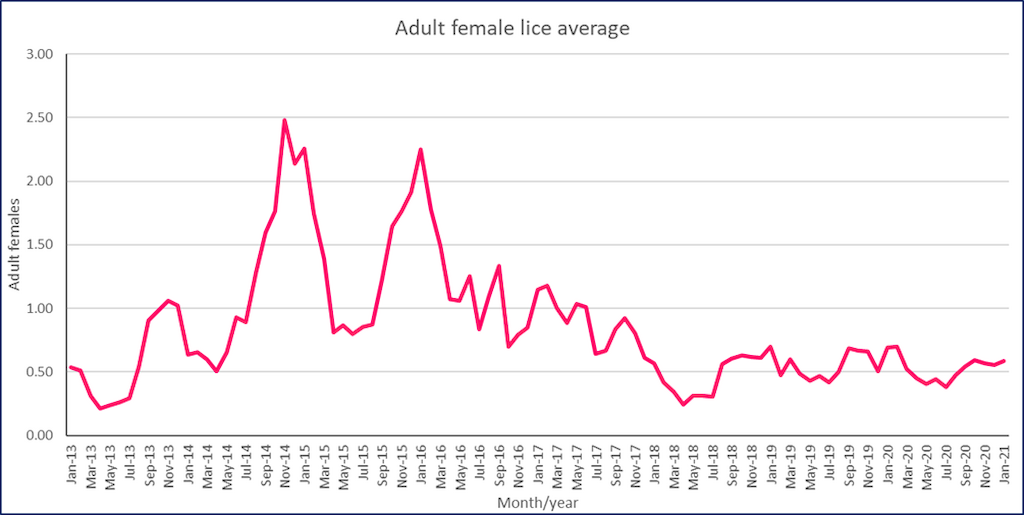Our farmers monitor their stock every day and act quickly if there is an indication of any health or welfare challenges to their fish. This is done in line with veterinary advice and, where appropriate, using available and authorised medicines and treatments. This is the same as any other animal welfare - farmed or domestic.
Working in nature, whether on land or at sea, inevitably means that overcoming challenges is part of a farmer's regular routine. But they are also part of a team. As well as farmers having thorough fish health and welfare training, they are supported by specialists and veterinary experts to make sure that the best conditions are maintained for our salmon. All this contributes to the production of a high-quality, healthy product which is demanded around the globe.
Good farm husbandry
All our farmers have a responsibility to look after their livestock, whatever the challenge. They, along with support from health and welfare specialists and vets, employ a range of techniques to ensure the health and welfare of their salmon. Investment and spending on prevention over cure has increased in recent years.
- The sector is world-leading in its use of cleaner fish such as wrasse and lumpfish. They live among farmed salmon and pick off and eat any sea lice.
- Our farmers use high-tension and tougher new nets to prevent predator attacks from seals or birds. Many have now introduced physical barriers such as "lice skirts" or "seal blinds" around pens to prevent unwanted guests.
- There has been major new investment in water-based treatments.
One, or a combination, of these methods and technologies increase the protection of our salmon.
Welfare: A number one priority
As well as meeting all relevant Scottish Government legislation requirements, salmon in Scotland is farmed to world class standards, including those laid out in the . Importantly, the Code's 500 check points, covering every aspect of Scottish salmon farming, are independently audited.
In addition, other independent certification is sought from a range of world and leading accreditation bodies including those listed below* and many retailers also require bespoke requirements and audits to take place.
Fish Health
Rearing fish in the best possible conditions
Scottish farmed salmon are raised in the 'fields of the ocean'- an environment which is close to their natural habitat - much like cattle or sheep in fields around the countryside.

These natural conditions mean that they benefit from the strong Scottish tidal flow through their pens which aids activity.
Stocking density is an important factor in farming salmon. Every pen consists of 98.5 per cent water and only 1.5 per cent fish - a combination which is based on scientific research and provides plenty of space for each fish while also allowing for natural shoaling behaviour.
The results at harvest show that of all salmon processed, over 97 per cent classified as 'Superior Quality'. This quality is dependent on the whole farming process and the world-leading, robust welfare standards and practices in place are vital.
Fish Welfare
Improving the survival of farmed salmon
Caring for our fish during their marine stage can last up to around two years with the goal being for all salmon reaching harvest as planned.
In 2020, the annual average survival rate achieved for post-smolt farmed salmon was over 85% or 17 out of every 20 farmed salmon (14.5% mortality).
Challenges can vary in the natural environment and minimising losses against those challenges is a major focus for the sector. Our farmers continue to develop practices and technologies to improve survival rates. When losses do occur, each farm reports those losses in a timely manner to the authorities.
We will always strive to look after every one of our farmed fish but this record is not too dissimilar to land based agricultural losses and is notably different from the survival rate of wild salmon which experience high annual rates of mortality at sea of 65-95%*.
(*Chaput, G 2012, ICES Journal of Marine Science, Volume 69, Issue 8, November 2012)
Sea Lice
Record low numbers of naturally occurring sea lice
Average sea lice numbers have been low for the last three years. The sector continues to invest in maintaining low numbers and providing increased transparency and publication rates of data.

